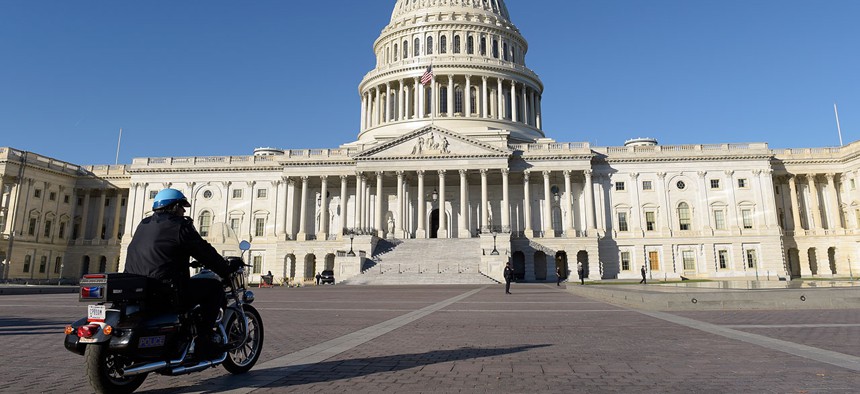A Brief History of Violence Against Members of Congress
Attacks on federal legislators are rare, but they’re not unknown in the 200-year history of the deliberative branch.
Violence against federal legislators is less common than assassination attempts against presidents, but the deliberative branch has seen its share of tragedies and near-tragedies.
The most recent shooting of a member of Congress took place only six years ago when the Arizona Democrat Gabby Giffords was shot in the head during a constituent event in Tucson in 2011. Giffords survived, but was forced to leave Congress because of her injuries. After wounding her, the gunman shot and killed six other people at the event, including federal judge John Roll. Giffords has since turned her attention to campaigning for stricter gun laws. On Twitter, she sent her regards to those injured Wednesday and praised members of the Capitol Police.
My heart is with my former colleagues, their families & staff, and the US Capitol Police- public servants and heroes today and every day.
— Gabrielle Giffords (@GabbyGiffords) June 14, 2017
No member of Congress has been killed on U.S. soil since the assassination of New York Senator Robert Kennedy in 1968. He was the third legislator to die in the line of duty in the 20th century and the 14th overall in American history. Because Kennedy was running for president at the time, public attention focused on increasing security measures for presidential candidates. All major-party nominees have subsequently received Secret Service protection, as well as some high-profile contenders during the primaries. Illinois Senator Barack Obama began receiving round-the-clock protection in May 2007, far earlier than any other presidential candidate.
Two House representatives were also subsequently killed outside the country after Kennedy’s death. Followers of People’s Temple leader Jim Jones killed California’s Leo Ryan outside Jonestown in Guyana in 1978, where Ryan was investigating reports that the cult was holding some of his constituents against their will. In 1983, Soviet air forces shot down KAL Flight 007, a commercial airliner traveling from New York City to Seoul, over the Sea of Japan while Georgia’s Larry McDonald was traveling aboard.
In the republic’s early days, the most common cause of violent death for legislators was dueling. Two members of the House died participating in them prior to the Civil War. After Kentucky Representative William Graves killed Maine Representative Jonathan Cilley in an 1838 encounter, Congress passed legislation criminalizing duels in the District of Columbia. But the practice did not immediately die out after Cilley’s death. In 1859, Chief Justice of California David Terry shot and killed California Senator David Broderick in a duel sparked by a rift over slavery. Duels fell into disfavor after Broderick’s death and virtually disappeared from American political life after the mid-19th century.
Honor-based violence against members of Congress took other forms as dueling waned. The most famous incident came in 1856 when South Carolina Representative Preston Brooks, a staunch pro-slavery advocate, repeatedly bludgeoned abolitionist Massachusetts Senator Charles Sumner with a cane on the floor of the Senate. Brooks attacked Sumner a few days after the senator disparaged one of Brooks’ relatives in a speech. The polarized response to the assault deepened the sectional chasm in the North and the South ahead of the Civil War. It was not the last case of cane-related violence at the Capitol: Congress censured Kentucky Representative Lovell Rousseau in 1866 for beating his Iowa colleague Josiah Grinnell with one after Grinnell demeaned Rousseau’s service during the war.
Wednesday’s attack on the baseball practice is the first attack on multiple legislators since a shooting inside Congress itself in 1954. A group of Puerto Rican separatists opened fire from a visitors’ gallery into the House chamber during a debate, wounding five legislators but killing none of them. In 1998, a gunman killed two Capitol Police officers while attempting to enter the Capitol itself; one of the officers wounded him and prevented further attack.
Presidents are known for their extensive security detail and Capitol Hill itself is well-fortified by its own police force. But individual members of Congress rarely have their own police protection. In a CNN interview Wednesday morning, Kentucky Senator Rand Paul said the only reason Capitol Police were present during the baseball practice was because Louisiana Representative Steve Scalise, who also serves as the House majority whip, is a member of congressional leadership.




